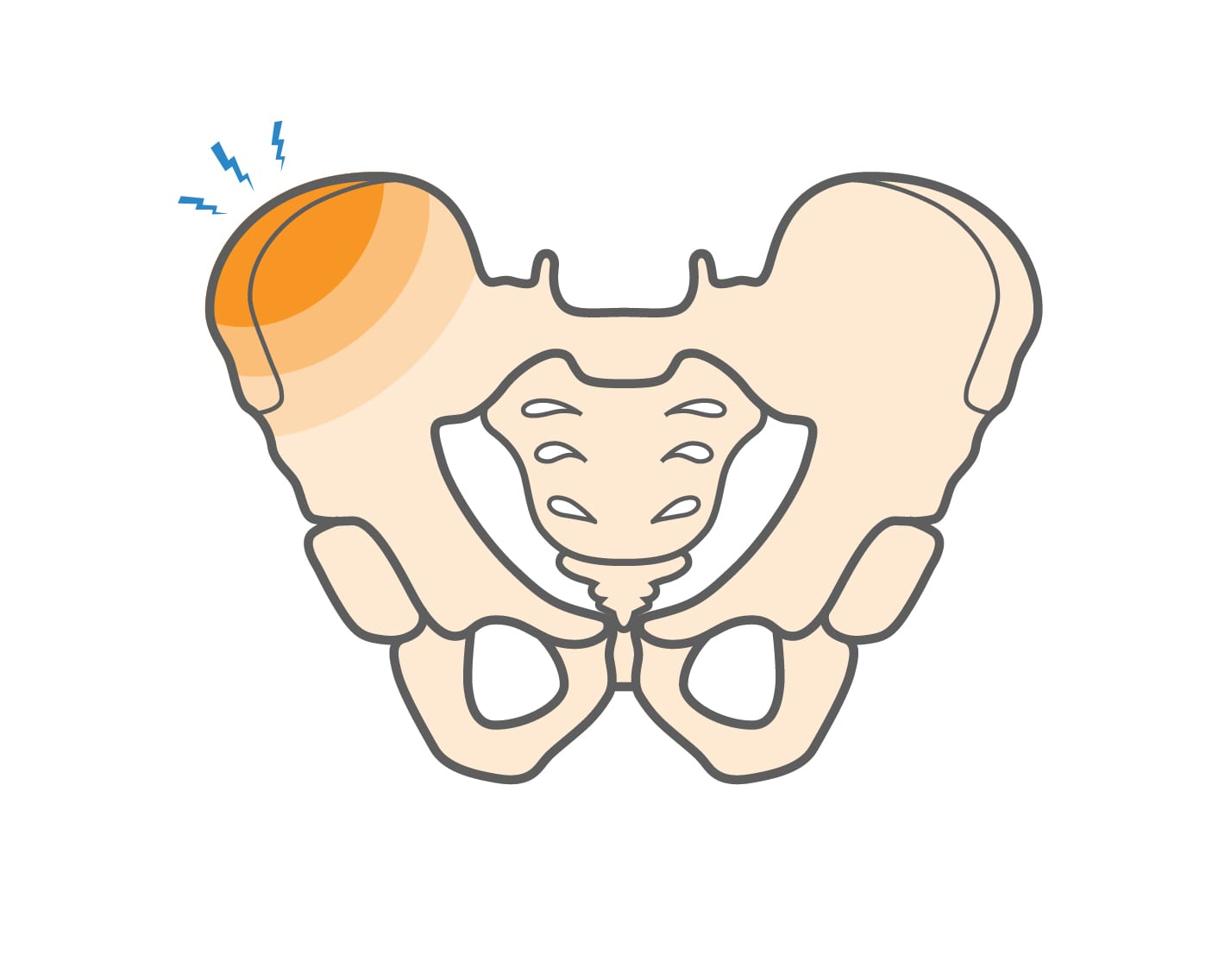A hip pointer is a painful injury to the iliac crest, the upper prominence of the pelvis over the side of the hip. The pain and tenderness associated with this injury can limit athletes’ participation in sports. The injury can also cause bleeding around the hip and into the abdominal muscles.
Hip Pointer Injury Causes, Symptoms & Treatment Options
A hip pointer injury is painful to the iliac crest, the upper prominence of the pelvis over the side of the hip. The pain and tenderness associated with this injury can limit athletes’ participation in sports.
Overview
Overview

What causes Hip Pointer Injury?
Hip pointer injuries are usually caused by a direct blow to the hip. This type of contact injury is common among athletes who play contact sports. While a hip pointer often occurs due to an iliac crest contusion or pelvic bruise on the playing field, athletes can also suffer this injury from a fall.
Hip pointer injuries are most common in these sports:
• Hockey
• Football
• Basketball
• Volleyball
• Skiing
• Rugby
Symptoms
Athletes with a hip pointer injury are likely to experience tenderness and pain, sometimes intense, in the area where they have been injured. Lateral hip pain, bruising, and swelling may be present, and athletes may experience a limited range of motion in the hip. The injury can also result in bleeding into the abdominal muscles connected to the iliac crest. Because the abdominal muscles are affected, common symptoms also include pain when:
• Walking
• Coughing
• Sneezing
• Breathing deeply
• Laughing
When to see a doctor
Athletes who suffer a serious contact injury to their hip should see their doctor. Your doctor’s visit will include a complete physical examination to assess the extent of your hip pointer injury. X-rays are often needed to rule out other conditions, such as fractures.
Non-operative treatment
The treatment of a hip pointer is always non-operative. The most important thing to do is rest. Other conservative treatments include:
• Local, regular applications of ice for the first three days after the injury
• Taking nonsteroidal anti-inflammatory drugs (NSAIDs), such as ibuprofen and naproxen
• Physical therapy to develop strength and improve range of motion while the injury heals
Try these exercises to help address your condition:
Below is a PDF of the Exercise Program
Recovery
Athletes can usually return to play once pain and other symptoms have subsided. This may take a few weeks. For extra protection, consider padding when you return to contact sports. Your doctor and physical therapist can guide you in your recovery.
GET BACK TO WHAT YOU LOVE. FASTER
Frequently Asked Questions
How long does it take to recover from a hip pointer?
Recovery usually takes a few weeks. You're likely ready to return to activity if you're no longer limping, have full ROM of the hip and normal strength.
What's the fastest way to heal a hip pointer?
Use crutches to reduce pressure, apply ice frequently, wrap the area for support, and elevate your hips to ease swelling.
How can hip pointer injuries be prevented?
Wearing protective gear like hip pads in contact sports helps. In sports without padding, proper technique can reduce the risk.
Can a hip pointer injury lead to long-term issues?
While most hip pointer injuries heal with proper care, if not treated properly or if recurrent, they can lead to chronic pain, muscle weakness, or reduced range of motion in the hip.

